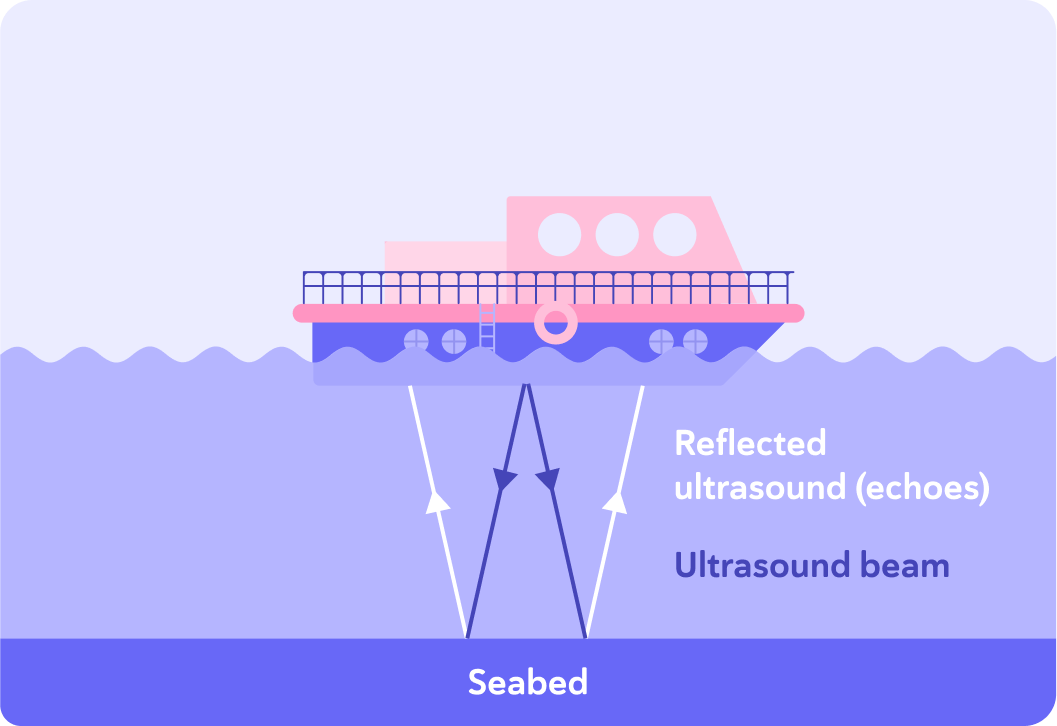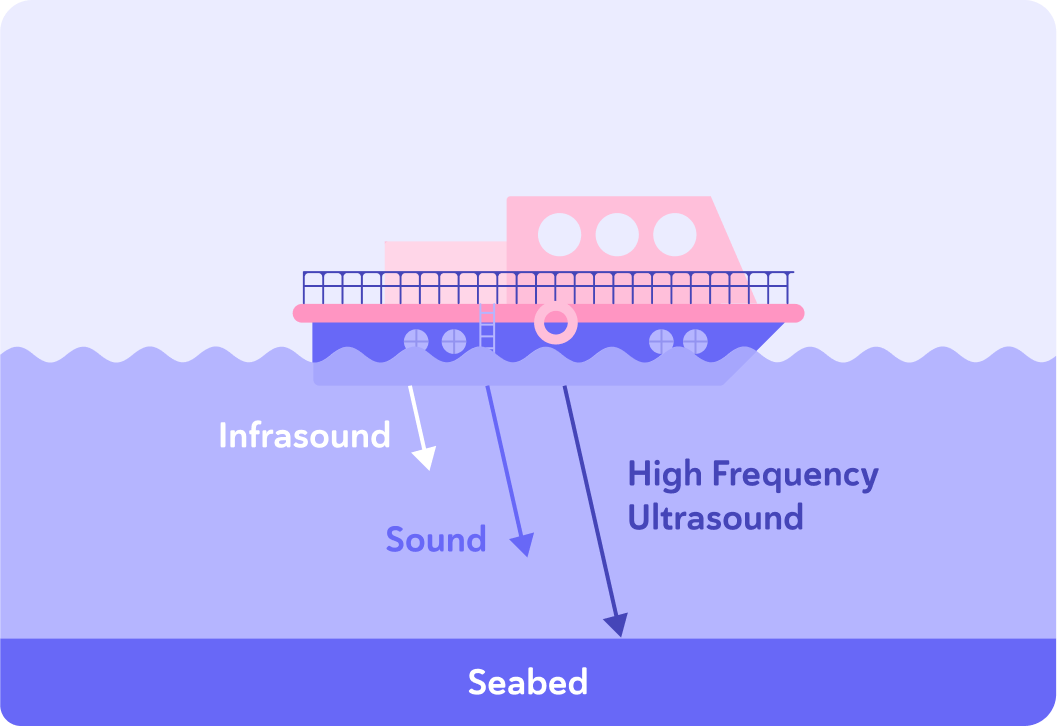YOU ARE LEARNING:
Echoes

Echoes
Echoes are reflected sound waves which are heard after the initial sound. Echo-sounding uses high frequency sound waves to detect objects in deep water and measure water depth.
Where would you get the best echo?

An echo is a repetition of a sound. What do you think creates this repetition of sound, for example when you speak inside a cave?

What does the law of reflection say?

This is a ray diagram for a reflected wave.
The law of reflection states that θi=θr. This is true for all waves.

What types of waves do you think can be reflected?

We put a lot of effort into reducing the amount of echo in homes and music studios. What is useful for reducing echoes?

You can select multiple answers
What types of surface generate echoes best?

You can select multiple answers
We use ultrasound waves to detect objects in deep water and to measure water depth.
We also call this technique echo sounding.

We transmit a pulse of sound towards the seabed and time that it takes 6 seconds before we detect the echo. We want to find out the distance to the seabed (how deep the water is), so what else do we need to know?
A) The wavelength of sound waves in water. B) The speed of sound in water. C) How many sound waves we have transmitted.


The speed of sound in water is 1450m/s, so the depth of the water is 1450m/s×6s=8700m .
A) Yes, that's correct. B) No!


6 seconds is the time it takes for the sound waves to reach the seabed and for the echoes to make it back up to the surface. So the correct distance to the seabed is not 8700m. It is only...


Sonar systems use this technique also to find things in the water or on the seabed, for example shoals of fish, submarines or shipwrecks.
SONAR stands for SOund Navigation And Ranging.

We use high frequency ultrasound waves for echo-sounding instead of normal sound waves.
This is because water absorbs high frequencies at a slower rate, so the ultrasound waves lose energy slower and can travel further. Echo-sounding usually uses ultrasound waves of around 50kHz.

A sonar system on a boat sends an ultrasound pulse towards the seabed. The pulse is detected 0.4s later. The speed of sound in water is 1450m/s. How deep is the water in meters?

Bats use the same technique to "see" where they are going.
We call this echolocation. Bats emits ultrasound waves and detect their reflection off of nearby objects, which allows the bats to "see" - or rather hear - where those objects are so they can avoid crashing into them, or so they can catch something to eat!

